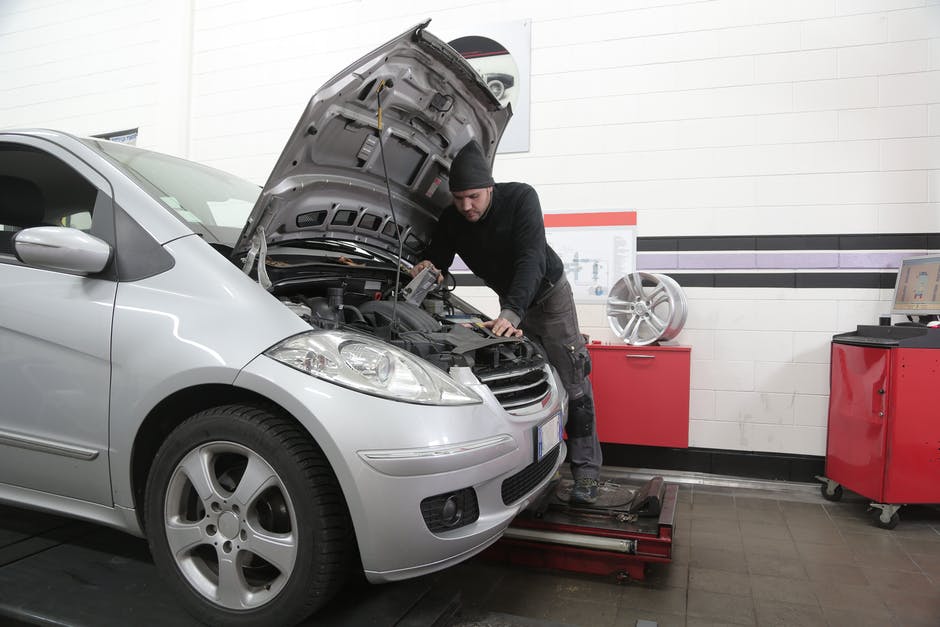Did you know that Americans spend almost 10% of their income on car gasoline every month?
Driving a car is the goal of many young people and the hobby of many adults.
However, have you ever wondered what causes a car to move? How does a car use fuel to propel the vehicle? What other processes are involved?
If you have asked, “how do cars work?” we are here to help you. Why not follow our in-depth article to find the answer to this intriguing question.
What Makes the Wheels Turn?
You sit in your car, you turn the ignition, put your foot on the pedal and the car lurches forward. This is a very simple process. However, what actually happens during this time?
Imagine for a moment that you are cycling on a bicycle. Your muscles cause your legs to move up and down. This movement of the pedals propels the chain and thus the wheels on your bicycle.
A similar process occurs in a combustion engine. Pistons attached to the engine move up and down and rotate the car’s crankshaft. This then turns the wheels.
Different sizes of engines have different numbers of cylinders. Many have 4 or 6 cylinders, however, it is possible to have up to 12 cylinders.
Where Does the Power Come From?
Moving the cylinders and propelling a vehicle forward can take a large amount of power. How does the engine generate this?
Thousands of tiny controlled explosions propel the cylinders each minute. Within the engine block, correct measures of oxygen and fuel are combined to create these explosions. The rapid expansion that results from the explosions pushes the cylinders.
This explains in simple terms the process that pushes the wheels forward when you press on the gas pedal.
Of course, the quality of materials that you put into the engine will affect its efficiency. Clean filtered air is important. As is quality fuel such as from fuel supplier Quarles Inc.
How does a vehicle combine the necessary materials? How does it remove the waste after each explosion? Glad you asked! Here are the answers to these questions.
Engines Need to Breath
Engines need air and fuel to be able to propel the cylinders.
As it moves downward, valves in the cylinder open to allow air inside. When the piston is at its lowest point the valves close. This seals the cylinder in preparation for the compression stage. As the piston moves upward it compresses this air.
This is how the cylinders receive the air that it needs for combustion to take place. How does it receive the fuel?
Mixing the Fuel
In many modern engines, the gasoline fuel is injected into the cylinder. You may have heard of fuel injection engines. Other engines will mix the air and the fuel before it enters the cylinder.
Now we have a mix of compressed air and fuel. We are ready for the combustion stroke. As the piston reaches its highest point, the spark plug ignites the fuel, and the gases that result from this explosion pushes the cylinder down.
The explosion is relatively small. However, this is repeated in the engine’s cylinders thousands of times each minute. As you press the gas pedal, the rate of explosions increases, and thus the speed.
Removing the Waste
After the explosion, there are waste gases that need to be extracted completely in order for the engine to run smoothly.
The cylinder has been pushed down by the explosion. However, as it rises back up the cylinder it pushes the waste gases out of the exhaust valves. The gases from the various cylinders combine and are routed to the rear of the car.
Sometimes steps are taken to cleanse these gases before they are expelled out of the rear of the exhaust pipe.
This explains the process behind the propulsion of your vehicle using a combustion engine. However, there is more than one kind of engine.
Different Types of Engines
While this is the basic method behind combustion engine propulsion, the method can be tweaked to create different results.
Atkinson-cycle engines use slightly different valve timings. This means that the result is a slower engine, but one that uses fuel more efficiently.
You will likely have heard of turbocharging and supercharging. These additions will greatly increase the amount of air that is pumped into the chambers. The rate of fuel injected is also increased. This means that the resulting explosions are significantly more powerful.
Diesel engines work using the same method, but do not use spark plugs. The atomized diesel fuel ignites instantly when injected into the compressed air.
V6 and v8 Engines
If you like sports cars or follow motor racing, you have probably heard of V6 and V8 engines. What are they? Now you know the basic structure of an engine you are ready to find out.
As discussed, in an engine the cylinders rotate to push the wheels. However, more than 4 cylinders would create a wide engine. In the case of 6 or 8 cylinder engines, they are split into 2 banks of 3 or 4. These are arranged almost facing one another in a “V” shape. From this, we get the name V6 or V8.
How Do Cars Work? And Many Other Questions Answered!
Now you know how cars work, you are one step closer to understanding how to drive more safely and efficiently. Asking the question “how do cars work?” can save you fuel and money.
This is just the beginning, as you come to better understand your engine, you will be able to perform some simple maintenance tasks yourself.
If you are interested in cars and technology of all kinds then we are here to help! We gather the latest information regarding technology developments and bring them to you via our feed.
Why not take a minute to check it out and see how we can help you today.

